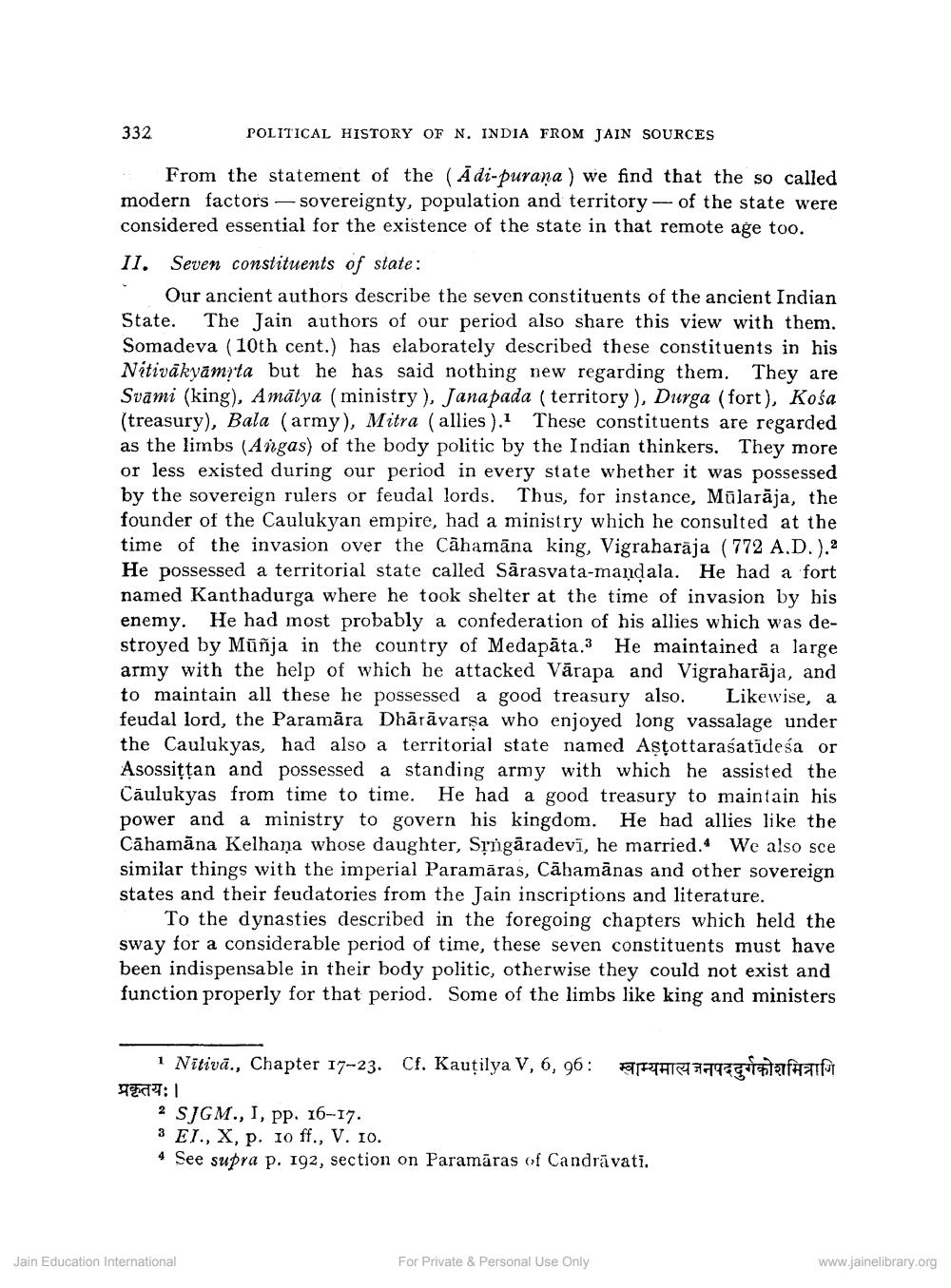________________
332
POLITICAL HISTORY OF N. INDIA FROM JAIN SOURCES
From the statement of the (Ādi-purana ) we find that the so called modern factors — sovereignty, population and territory --- of the state were considered essential for the existence of the state in that remote age too. II. Seven constituents of state:
Our ancient authors describe the seven constituents of the ancient Indian State. The Jain authors of our period also share this view with them. Somadeva (10th cent.) has elaborately described these constituents in his Nitiväkyämyta but he has said nothing new regarding them. They are Svāmi (king), Amātya (ministry), Janapada (territory), Durga (fort), Kośa (treasury), Bala (army), Mitra (allies). These constituents are regarded as the limbs (Angas) of the body politic by the Indian thinkers. They more or less existed during our period in every state whether it was possessed by the sovereign rulers or feudal lords. Thus, for instance, Mūlarāja, the founder of the Caulukyan empire, had a ministry which he consulted at the time of the invasion over the Cahamāna king, Vigraharaja (772 A.D.).2 He possessed a territorial state called Sārasvata-mandala. He had a fort named Kanthadurga where he took shelter at the time of invasion by his enemy. He had most probably a confederation of his allies which was destroyed by Mūñja in the country of Medapāta.3 He maintained a large army with the help of which he attacked Värapa and Vigraharāja, and to maintain all these he possessed a good treasury also. Likewise, a feudal lord, the Paramāra Dhārāvarşa who enjoyed long vassalage under the Caulukyas, had also a territorial state named Astottarasatidesa or Asossittan and possessed a standing army with which he assisted the Caulukyas from time to time. He had a good treasury to maintain his power and a ministry to govern his kingdom. He had allies like the Cāhamāna Kelhana whose daughter, Srgāradevī, he married. We also sce similar things with the imperial Paramāras, Cāhamānas and other sovereign states and their feudatories from the Jain inscriptions and literature.
To the dynasties described in the foregoing chapters which held the sway for a considerable period of time, these seven constituents must have been indispensable in their body politic, otherwise they could not exist and function properly for that period. Some of the limbs like king and ministers
afaifa
1 Nitivā., Chapter 17-23. Cf. Kautilya V, 6, 96: FEAT Te 99101: 1
2 SJGM., I, pp. 16-17. 3 EI., X, p. 10 ff., V. 10. 4 See supra p. 192, section on Paramāras of Candrāvati.
Jain Education International
For Private & Personal Use Only
www.jainelibrary.org




